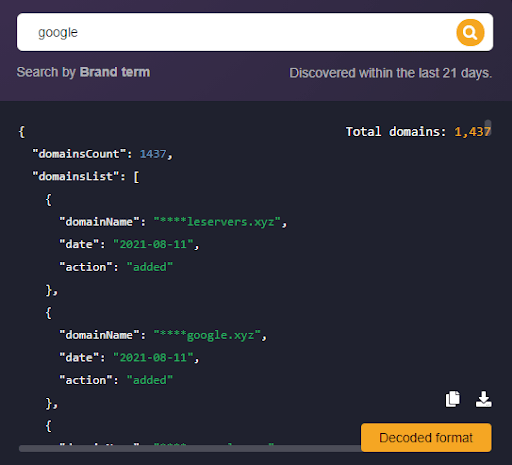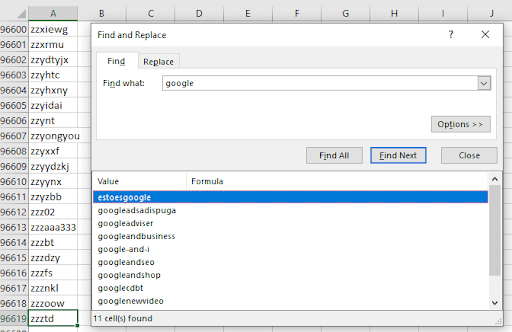Brand protection covers a wide range of activities that prevent other entities from using a brand name and intellectual property. Digitalization has further increased the scope of brand protection to include preserving one’s domain brand reputation. With this improvement, developers and security specialists could be asked to implement various domain brand protection measures, which cover monitoring newly registered domains.
In this post, we answer questions relevant to domain brand protection and monitoring newly registered domains. We also tackle how API integration works compared to using newly registered domains data feed.
What Is Domain Brand Reputation?
Domain brand reputation refers to how your brand name is used in the domain name space, which ultimately affects your overall brand reputation. For example, if your brand name repeatedly appears in a list of phishing domains, your reputation and business can suffer. Multiple studies, such as those of Comparitech and ArcServe, have established that consumers and investors tend to walk away from companies that have been involved in a cyber attack.
And since most cyber attacks start with phishing, it’s vital to ensure that your brand name is not used in this or any other malicious campaigns. Why is that so? Threat actors often register domains that contain the names of legitimate companies to make their campaigns more believable. Here’s a recent example. Between 1 July and 3 August 2021 thousands of cybersquatting domains that contain the names of the top 10 impersonated brands were registered, and about 32% of these domains have been reported “malicious.”
Aside from being used in cyber attacks, trademark infringers and counterfeiters also use domain names. These actors bank on a brand’s reputation and legitimacy to lure consumers into buying cheaper but lower-quality products.
Monitoring Newly Registered Domains
Newly registered domains are among the weapons threat actors use in their attacks. Hence, monitoring domain name registrations could be an integral part of a company’s overall brand protection strategy. It can be done in several ways, including integrating an API that monitors domain registrations or using a newly registered domains data feed. We describe both options below.
Brand Monitor API
The brand monitor API we tested for this post monitors all newly registered and deleted domains that contain a selected brand name. To illustrate, let’s say you want to keep track of newly registered domains containing the word “google.” The API returned 1,437 domains added and dropped within the past 21 days.
This particular API can be integrated using client libraries in Python or other languages. And since all API calls rely on the provider’s existing infrastructure, there's no need to set up or maintain your own database. Of course, functionality may vary depending on a provider, but overall using a brand monitor API wouldn’t demand too much from your company’s resources. Businesses looking for cost-effective solutions can therefore choose to integrate it into their brand protection strategies.
Newly Registered Domains Data Feed
Another way to monitor newly registered domains is by subscribing to and downloading data feeds via HTTPS or FTP. As with any database integration, you would need to analyze the data in your local environment before integrating it into your backend systems. The goal of the data processing is to extract brand-related domain names.
Additionally, you would need to regularly download the most updated data feed to ensure accuracy.
Here’s an example of the newly registered domains data feed we mentioned earlier for the .com TLD space for 29 August 2021, which contains 96,619 domains. Eleven of them contain the word “google.”
While this monitoring method takes time and more human resources, analyzing the data shouldn’t be too tricky since these databases come in comma-separated values (CSV) format.
Using newly registered domains data feed might be more suitable for entities with strict firewall rules and those that can’t communicate through API calls, such as governmental entities, for instance.
If you’re developing brand protection solutions, incorporating newly registered domain monitoring functionality could make your product more inclusive. The additional functionality allows your product to detect potential typosquatting or cybersquatting domains. These domain names can turn out to have been registered by trademark infringers or, worse, cybercriminals.




Top comments (0)